 W
WThe Anarchy of the 12 Warlords, also the Period of the 12 Warlords, was a period of chaos and civil war in the history of Vietnam, from 944 to 968 caused by the succession of the Ngô Dynasty after the death of King Ngô Quyền. This period is also sometimes simply called the Twelve Warlords.
 W
WThe War of the Antiochene Succession, also known as the Antiochene War of Succession, comprised a series of armed conflicts in northern Syria between 1201 and 1219, connected to the disputed succession of Bohemond III of Antioch. The Principality of Antioch was the leading Christian power in the region during the last decades of the 12th century, but Armenian Cilicia challenged its supremacy. The capture of an important fortress, Bagras, in Syria by Leo II of Cilicia gave rise to a prolonged conflict already in the early 1190s. Leo tried to capture Antioch, but the Greek and Latin burghers formed a commune and prevented the Armenian soldiers from occupying the town. Bohemond III's eldest son, Raymond, died in 1197, leaving an infant son, Raymond-Roupen. The boy's mother, Alice of Armenia, was Leo I's niece and heir presumptive. Bohemond III and the Antiochene noblemen confirmed Raymond-Roupen's right to succeed his grandfather in Antioch, but the commune preferred Bohemond III's younger son, Bohemond, Count of Tripoli.
 W
WThe Battle of the Frigidus, also called the Battle of the Frigid River, was fought between 5–6 September 394, between the army of the Eastern Emperor Theodosius I and the army of Western Roman ruler Eugenius in the eastern border of Regio X in Roman Italia.
 W
WThe Berke–Hulagu war was fought between two Mongol leaders, Berke Khan of the Golden Horde and Hulagu Khan of the Ilkhanate. It was fought mostly in the Caucasus mountains area in the 1260s after the destruction of Baghdad in 1258. The war overlaps with the Toluid Civil War in the Mongol Empire between two members of the Tolui family line, Kublai Khan and Ariq Böke, who both claimed the title of Great Khan (Khagan). Kublai allied with Hulagu, while Ariq Böke sided with Berke. Hulagu headed to Mongolia for the election of a new Khagan to succeed Möngke Khan, but the loss of the Battle of Ain Jalut to the Mamluks forced him to withdraw back to the Middle East. The Mamluk victory emboldened Berke to invade the Ilkhanate. The Berke–Hulagu war and the Toluid Civil War as well as the subsequent Kaidu–Kublai war marked a key moment in the fragmentation of the Mongol empire after the death of Möngke, the fourth Great Khan of the Mongol Empire.
 W
WThe Carnatic Wars were a series of military conflicts in the middle of the 18th century in India. The conflicts involved numerous nominally independent rulers and their vassals, struggles for succession and territory; and included a diplomatic and military struggle between the French East India Company and the British East India Company. They were mainly fought within the territories of Mughal India with the assistance of various fragmented polities loyal to the "Great Moghul". As a result of these military contests, the British East India Company established its dominance among the European trading companies within India. The French company was pushed to a corner and was confined primarily to Pondichéry. The East India Company's dominance eventually led to control by the British Company over most of India and eventually to the establishment of the British Raj.
 W
WThe Chu–Han Contention was an interregnum period between the Qin dynasty and the Han dynasty in Chinese history. Following the collapse of the Qin dynasty in 206 BC, Xiang Yu split the former Qin Empire into the Eighteen Kingdoms. Civil wars soon broke out in a struggle for supremacy, with two major contending powers emerging, namely the Kingdom of Western Chu led by Xiang Yu, and the Kingdom of Han led by Liu Bang. Several minor kings also warred, but these were largely insignificant compared to the main conflict between Western Chu and Han. The war ended in 202 BC with total victory for Han at the Battle of Gaixia, with Liu Bang soon crowning himself as the first emperor of the Han dynasty.
 W
WThe Crisis of the Sixteenth Century was the later part of the Transitional period of Sri Lanka, that began with the decline of the Kingdom of Kotte, with the Vijayabā Kollaya in 1521, culminated in the collapse of the Kingdom of Sitawaka, and with Portuguese dominance, if not control by 1597, over two of three kingdoms that had existed at the start of the century. The Kingdom of Kandy was the only independent Sinhalese kingdom to survive. The period was characterised by the fragmentation of the Sinhalese polity, intervention of foreign forces and constant military conflict.
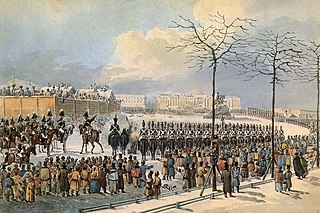 W
WThe Decembrist revolt or the Decembrist uprising took place in Imperial Russia on 26 December [O.S. 14 December] 1825. Russian army officers led about 3,000 soldiers in a protest against Tsar Nicholas I's assumption of the throne the day before, as his elder brother Constantine had removed himself from the line of succession. Because these events occurred in December, the rebels were called the Decembrists.
 W
WThe Wars of the Diadochi, or Wars of Alexander's Successors, were a series of conflicts fought between Alexander the Great's generals over the rule of his vast empire after his death. They occurred between 322 and 281 BC.
 W
WThe First Fitna was a civil war within the Rashidun Caliphate which resulted in the overthrowing of the Rashidun caliphs and the establishment of the Umayyad dynasty. It began when the caliph Uthman was assassinated by rebels in 656 and continued through the four-year reign of Uthman's successor, Ali. It ended in 661 when Ali's heir Hasan ibn Ali concluded a treaty acknowledging the rule of Muawiyah, the first Umayyad caliph.
 W
WThe Forty Years' War was a military conflict fought between the Burmese-speaking Kingdom of Ava and the Mon-speaking Kingdom of Hanthawaddy Pegu. The war was fought during two separate periods: 1385 to 1391, and 1401 to 1424, interrupted by two truces of 1391–1401 and 1403–1408. It was fought primarily in today's Lower Burma and also in Upper Burma, Shan State, and Rakhine State. It ended in a stalemate, preserving the independence of Hanthawaddy, and effectively ending Ava's efforts to rebuild the erstwhile Pagan Kingdom.
 W
WThe Fourth Crusade (1202–1204) was a Latin Christian armed expedition called by Pope Innocent III. The stated intent of the expedition was to recapture the Muslim-controlled city of Jerusalem, by first conquering the powerful Egyptian Ayyubid Sultanate, the strongest Muslim state of the time. However, a sequence of economic and political events culminated in the Crusader army's 1204 Sack of Constantinople, the capital of the Greek Christian-controlled Byzantine Empire, rather than Egypt as originally planned.
 W
WThe Genpei War (1180–1185) was a national civil war between the Taira and Minamoto clans during the late-Heian period of Japan. It resulted in the downfall of the Taira and the establishment of the Kamakura shogunate under Minamoto no Yoritomo in 1192.
 W
WThe Göktürk civil war or Turkic interregnum was a number of political crises in the Turkic Khaganate first between 584 and 603, which resulted in the split of the khaganate into Western and Eastern.
 W
WThe Hasmonean Civil War was a civil war between two claimants to the Hasmonean Jewish Crown. What began as an inter-Jewish conflict became a highly decisive conflict that included the Nabataean Kingdom and ended with Roman involvement. This conflict resulted in the loss of Jewish independence.
 W
WThe Heiji rebellion was a short civil war between rival subjects of the cloistered Emperor Go-Shirakawa of Japan in 1160 fought in order to resolve a dispute about political power. It was preceded by the Hōgen Rebellion in 1156. Heiji no ran is seen as a direct outcome of the earlier armed dispute; but unlike Hōgen no ran, which was a dispute between members of the same clan, this was rather a struggle for power between two rival clans. It is also seen as a precursor of a broader civil war.
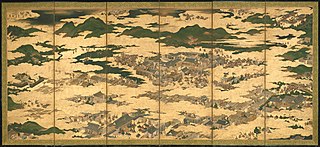 W
WThe Hōgen rebellion was a short civil war fought in order to resolve a dispute about Japanese Imperial succession. The dispute was also about the degree of control exercised by the Fujiwara clan who had become hereditary Imperial regents during the Heian period.
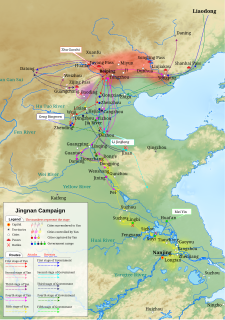 W
WJingnan campaign, or Jingnan rebellion, was a civil war in the early years of the Ming dynasty of China between the Jianwen Emperor and his uncle Zhu Di, the Prince of Yan. It started in 1399 and lasted for three years. The campaign ended after the forces of the Prince of Yan captured the imperial capital Nanjing. The fall of Nanjing was followed by the demise of Jianwen Emperor, and Zhu Di was crowned the Yongle Emperor.
 W
WThe Kurukshetra War, also called the Mahabharata War, is a war described in the Hindu epic poem Mahābhārata. The conflict arose from a dynastic succession struggle between two groups of cousins, the Kauravas and Pandavas, for the throne of Hastinapura. It involved several ancient kingdoms participating as allies of the rival groups.
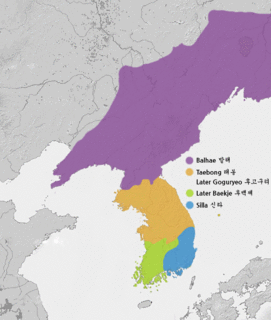 W
WThe Later Three Kingdoms of Korea (892–936) consisted of Silla, Hubaekje and Hugoguryeo. The latter two claimed heirs to the earlier Three Kingdoms of Korea, which had been united by Silla. This period arose out of national unrest during the reign of Queen Jinseong of Silla, and usually refers to the era between the founding of Hubaekje by Gyeon Hwon to the time Goryeo unified the peninsula.
 W
WThe Lü Clan Disturbance refers to a political upheaval after the death of Empress Lü Zhi of the Han dynasty, the aftermath of which saw her clan, the Lü, who were consort kin, being deposed from their seats of power and massacred; the deposition of the puppet Emperor Houshao; and the accession to the throne of Emperor Wen.
 W
WLülin was one of two major agrarian rebellion movements against Wang Mang's short-lived Xin dynasty in the modern southern Henan and northern Hubei regions. These two regions banded together to pool their strengths, their collective strength eventually leading to the downfall of the Xin and a temporary reinstatement of the Han Dynasty with Liu Xuan as the emperor. Many Lülin leaders became important members of the Gengshi Emperor's government, but infighting and incompetence in governing the empire led to the fall of the regime after only two years, paving the way for the eventual rise of Liu Xiu of the Eastern Han. The name Lülin comes from the Lülin Mountains, where the rebels had their stronghold for a while.
 W
WThe Nanboku-chō period , spanning from 1336 to 1392, was a period that occurred during the formative years of the Muromachi bakufu of Japanese history.
 W
WThe Nine Years' War (1688–1697), often called the War of the Grand Alliance or the War of the League of Augsburg, was a conflict between France and a European coalition which mainly included the Holy Roman Empire, the Dutch Republic, England, Spain, Savoy and Portugal. It was fought in Europe and the surrounding seas, in North America, and in India. It is sometimes considered the first global war. The conflict encompassed the Williamite war in Ireland and Jacobite risings in Scotland, where William III and James II struggled for control of England and Ireland, and a campaign in colonial North America between French and English settlers and their respective Indigenous allies, today called King William's War by Americans.
 W
WThe Ōnin War , also known as the Upheaval of Ōnin and Ōnin-Bunmei war, was a civil war that lasted from 1467 to 1477, during the Muromachi period in Japan. Ōnin refers to the Japanese era during which the war started; the war ended during the Bunmei era. A dispute between Hosokawa Katsumoto and Yamana Sōzen escalated into a nationwide civil war involving the Ashikaga shogunate and a number of daimyō in many regions of Japan.
 W
WThe Ottoman Civil War was a war of succession in the Ottoman Empire from 1509 to 1512, during the reign of Bayezid II. The war was fought between his two sons Ahmed and Selim.
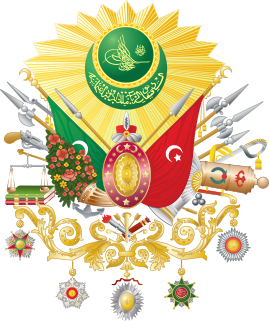 W
WThe Ottoman Interregnum, or the Ottoman Civil War, was a civil war in the Ottoman Empire between the sons of Sultan Bayezid I following the defeat of their father at the Battle of Ankara on 20 July 1402. Although Mehmed Çelebi was confirmed as sultan by Timur, his brothers İsa Çelebi, Musa Çelebi, Süleyman Çelebi, and later, Mustafa Çelebi, refused to recognize his authority, each claiming the throne for himself. Civil war was the result. The Interregnum lasted a little under 11 years until the Battle of Çamurlu on 5 July 1413, when Mehmed Çelebi emerged as victor, crowned himself Sultan Mehmed I, and restored the empire.
 W
WThe Pahang Civil War, also known as The Brothers War or the Bendahara War was a civil war fought from 1857 to 1863, between forces loyal to the reigning Raja Bendahara Tun Mutahir, and forces loyal to his brother Wan Ahmad, over the succession to the throne of Pahang.
 W
WThe Parthian war of Caracalla was an unsuccessful campaign by the Roman Empire under Caracalla against the Parthian Empire in 216–17 AD. It was the climax of a four-year period, starting in 213, when Caracalla pursued a lengthy campaign in central and eastern Europe and the Near East. After intervening to overthrow rulers in client kingdoms adjoining Parthia, he invaded in 216 using an abortive wedding proposal to the Parthian king's daughter as a casus belli. His forces carried out a campaign of massacres in the northern regions of the Parthian Empire before withdrawing to Asia Minor, where he was assassinated in April 217. The war was ended the following year after a heavy battle at Nisibis, with the Romans paying a huge sum of war reparations to the Parthians.
 W
WThe Rebellion of the Three Guards, or less commonly the Wu Geng Rebellion, was a civil war, instigated by an alliance of discontent Zhou princes, Shang loyalists, vassal states and non-Chinese peoples against the Zhou government under the Duke of Zhou's regency in the latter 11th century BC.
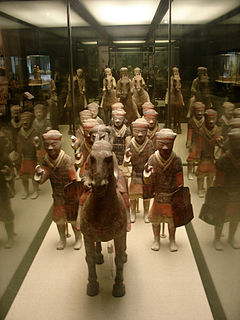 W
WThe Red Eyebrows was one of the two major agrarian rebellion movements against Wang Mang's short-lived Xin dynasty, the other being Lülin. It was so named because the rebels painted their eyebrows red.
 W
WAbū Manṣūr Nizār ibn al-Mustanṣir was a Fatimid prince, and the oldest son of the eighth Fatimid caliph and Isma'ili imam, al-Mustansir. When his father died in December 1094, the military strongman, al-Afdal Shahanshah, raised Nizar's younger brother al-Musta'li to the throne in Cairo, bypassing the claims of Nizar and other older sons of al-Mustansir. Nizar escaped Cairo, rebelled and seized Alexandria, where he reigned as caliph with the regnal name al-Muṣṭafā li-Dīn Allāh. In late 1095 he was defeated and taken prisoner to Cairo, where he was killed by immurement. Many Isma'ilis, especially in Persia, who rejected al-Musta'li's imamate and considered Nizar as the rightful imam, split off from the Fatimid regime and founded the Nizari branch of Isma'ilism, with their own line of imams who claimed descent from Nizar that continues to this day. Later during the 12th century some of Nizar's actual or claimed descendants tried, without success, to seize the throne from the Fatimid caliphs.
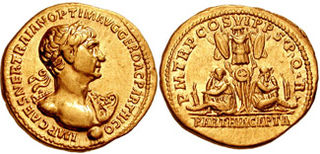 W
WTrajan's Parthian campaign, also known as Trajan's Parthian War, was engaged by Roman emperor Trajan in the year 115 against the Parthian Empire in Mesopotamia. The war was initially successful for the Romans, but due to a series of setbacks, including wide-scale rebellions in the Eastern Mediterranean and North Africa, as well as Trajan's death in 117, ended in a Roman withdrawal.
 W
WThe Sasanian civil war of 589–591 was a conflict that broke out in 589, due to the great deal of dissatisfaction among the nobles towards the rule of Hormizd IV. The civil war lasted until 591, ending with the overthrow of the Mihranid usurper Bahram Chobin and the restoration of the Sasanian family as the rulers of Iran.
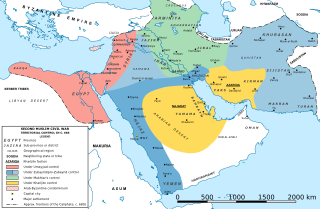 W
WThe Second Fitna was a period of general political and military disorder and conflicts in the Islamic community during the early Umayyad caliphate. It followed the death of the first Umayyad caliph Mu'awiya I in 680 and lasted for about twelve years. The war involved the suppression of two challenges to the Umayyad dynasty, the first by Husayn ibn Ali, as well as his supporters including Sulayman ibn Surad and Mukhtar al-Thaqafi who rallied for his revenge in Iraq, and the second by Abd Allah ibn al-Zubayr.
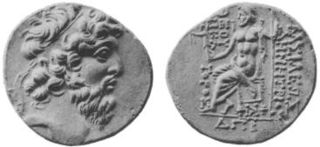 W
WThe Seleucid Dynastic Wars were a series of wars of succession that were fought between competing branches of the Seleucid royal household for control of the Seleucid Empire. Beginning as a by-product of several succession crises that arose from the reigns of Seleucus IV Philopator and his brother Antiochus IV Epiphanes in the 170s and 160s, the wars typified the final years of the empire and were an important cause of its decline as a major power in the Near East and Hellenistic world. The last war ended with the collapse of the kingdom and its annexation by the Romans in 63 BC.
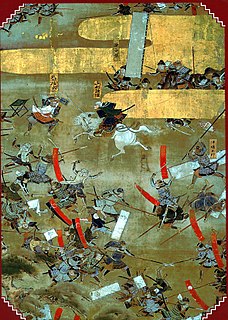 W
WThe Sengoku period is a period in Japanese history of near-constant civil war, social upheaval, and political intrigue from 1467 to 1615.
 W
WThe War of the Spanish Succession (1701–1714) was an early 18th century European war, triggered by the death in November 1700 of the childless Charles II of Spain. A key outcome was establishing the principle that dynastic rights were secondary to maintaining the balance of power between different countries. Related conflicts include the 1700-1721 Great Northern War, Rákóczi's War of Independence in Hungary, the Camisard revolt in southern France, Queen Anne's War in North America and minor struggles in Colonial India.
 W
WThe Third Mithridatic War, the last and longest of the three Mithridatic Wars, was fought between Mithridates VI of Pontus and the Roman Republic. Both sides were joined by a great number of allies dragging the entire east of the Mediterranean and large parts of Asia into the war. The conflict ended in defeat for Mithridates, ending the Pontic Kingdom, ending the Seleucid Empire, and also resulting in the Kingdom of Armenia becoming an allied client state of Rome.
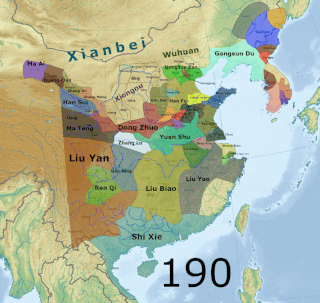 W
WThe Three Kingdoms from 220–280 AD was the tripartite division of China among the states of Wei, Shu, and Wu. The Three Kingdoms period started with the end of the Han dynasty and was followed by the Jin dynasty. The short-lived Yan kingdom in the Liaodong Peninsula, which lasted from 237 to 238, is sometimes considered as a "4th kingdom".
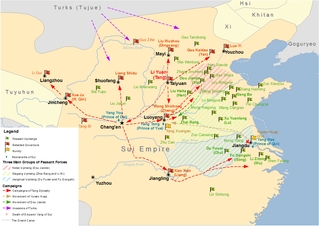 W
WThe transition from Sui to Tang refers to the transition period between the end of the Sui dynasty and the start of the Tang dynasty, when the former dynasty's territories were carved into a handful of short-lived states by its officials, generals, and agrarian rebel leaders, and the process of elimination and annexation that followed which ultimately culminated in the consolidation of the Tang dynasty by the former Sui general Li Yuan. The transition started roughly around the year of 613 when Emperor Yang of Sui launched his first of three failed campaigns against Goguryeo, leading to a number of desertions in the army and the start of agrarian revolt against the Sui, and ended in 628, when Emperor Gaozu's son Li Shimin annexed the agrarian rebel ruler Liang Shidu's state of Liang, thereby once again unifying most of China under a single power.
 W
WThe Twenty Years' Anarchy is a historiographic term used by some modern scholars for the period of acute internal instability in the Byzantine Empire marked by the rapid succession of several emperors to the throne between the first deposition of Justinian II in 695 and the ascent of Leo III the Isaurian to the throne in 717, marking the beginning of the Isaurian dynasty.
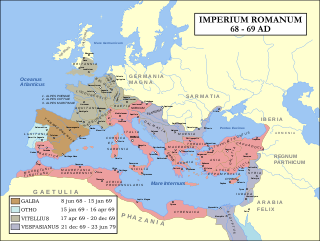 W
WThe Year of the Four Emperors, 69 AD, was a period in the history of the Roman Empire in which four emperors ruled in succession: Galba, Otho, Vitellius, and Vespasian.